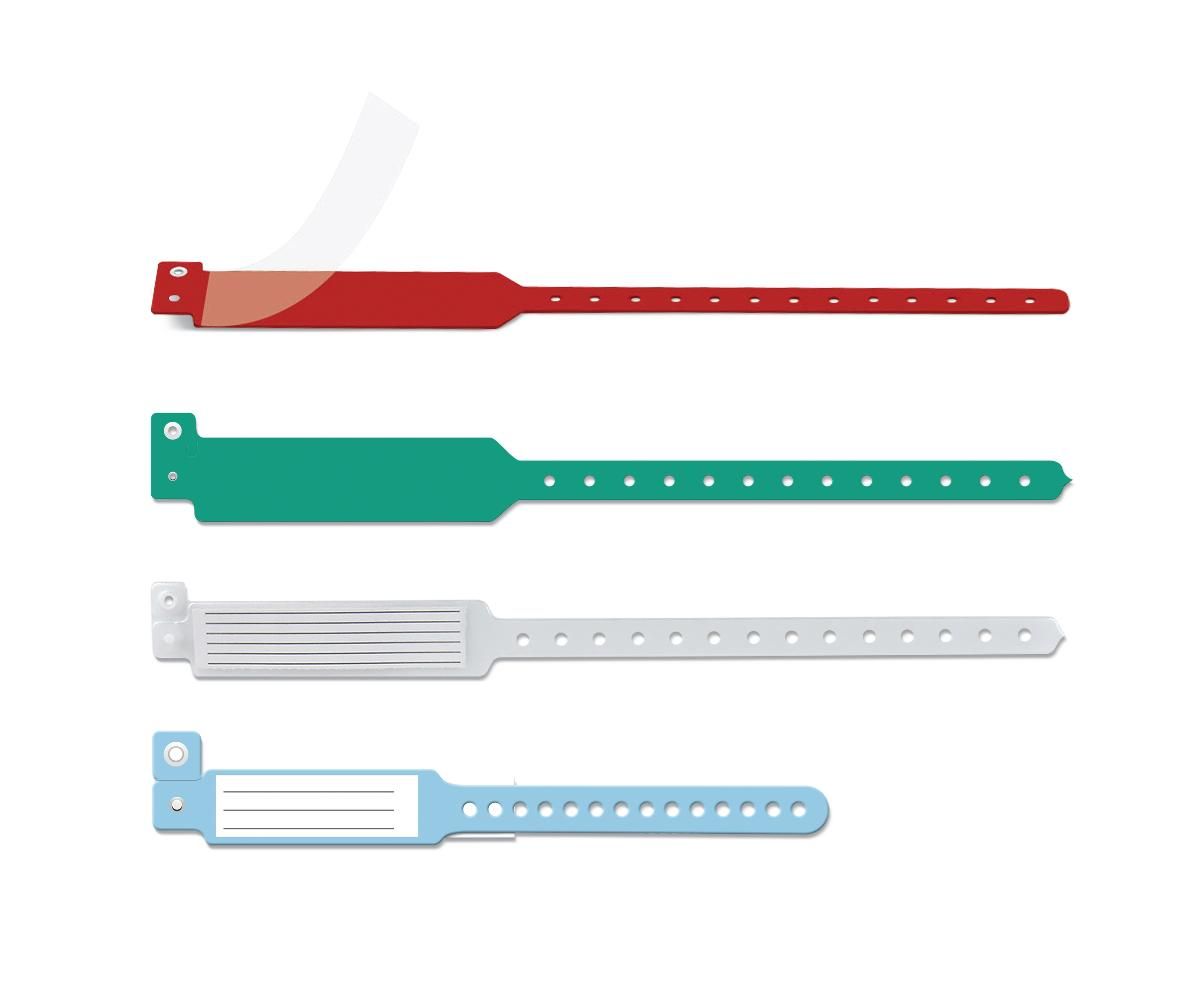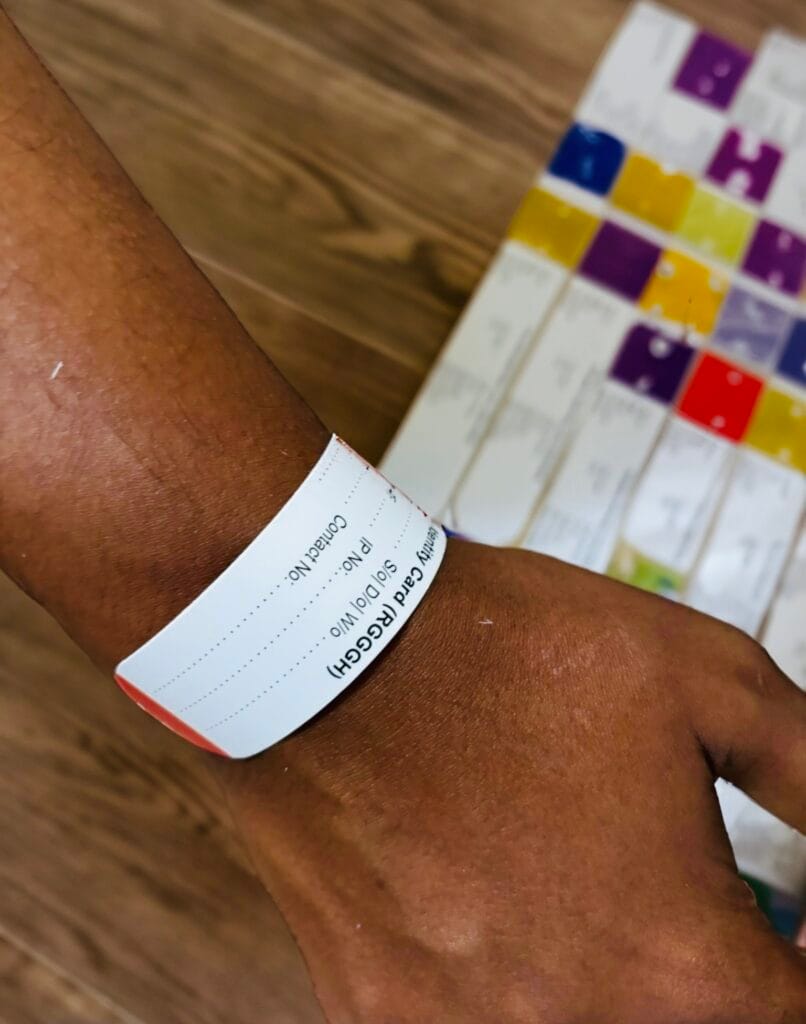Enhance Patient Care with the Dependability of a Patient Identification Band
Enhance Patient Care with the Dependability of a Patient Identification Band
Blog Article
Improving Patient Treatment With Efficient Recognition Bands
The application of efficient recognition bands is a critical component in improving patient treatment within medical care settings. These bands not just offer to alleviate the threats connected with patient misidentification yet likewise streamline interaction amongst medical workers, consequently fostering a much safer atmosphere. Numerous kinds of identification bands accommodate certain needs, from resilient wristbands for grownups to specialized bands for babies and critical situations. As the landscape of person identification develops, one have to take into consideration the implications of these systems on general medical care distribution and patient results. What technologies await in this essential area?
Relevance of Patient Identification
Guaranteeing accurate client recognition is vital in healthcare settings, as it straight influences the safety and security and high quality of care offered. Misidentification can bring about serious errors, including carrying out the incorrect medicine, executing incorrect procedures, or miscommunicating essential individual information. Such mistakes not just threaten client safety yet can also lead to legal implications and lowered trust fund in healthcare systems.
Reliable patient recognition is essential to developing a protected environment where people receive customized and proper care. It assists in the precise documents of case histories, allergies, and therapy plans, making sure that medical care companies have access to crucial details in all times. Furthermore, durable identification protocols help improve interaction among medical team, improving partnership and lowering the threat of errors.

Types of Identification Bands
Recognition bands play a critical role in keeping accurate client records and boosting safety within healthcare atmospheres. Various sorts of identification bands are made use of to provide to the details demands and demands of various individual populations.

Another type is the ankle joint band, which is specifically beneficial for newborns and infants, making certain that identification remains intact also during treatment treatments. Specialized bands, such as those for allergic reaction alerts or fall threat indications, offer additional layers of security by attracting immediate interest to vital person conditions.
Just recently, digital identification bands have acquired popularity, integrating barcodes or RFID innovation that can be scanned to swiftly fetch person information. These bands enhance operations and decrease the threat of human mistake throughout patient recognition processes.
Benefits of Effective Identification
Efficient recognition of people through making use of identification bands contributes substantially to overall individual safety and security and care top quality. By making sure that each individual is accurately identified, healthcare companies can efficiently match medical therapies and procedures to the right individual, reducing the risk of mistakes. This is specifically vital in atmospheres with high person turn over, where the capacity for misidentification is higher.
In addition, reliable identification bands improve communication among medical care groups. Clear and precise individual recognition promotes collaboration and guarantees that all staff member recognize a patient's specific requirements and clinical history. This interaction is essential for providing worked with care, especially in emergency situation situations where time is vital.

Ultimately, effective identification via the use of recognition bands not only safeguards people however also promotes a society of safety within medical care centers (Patient Identification Band). By focusing on accurate recognition, medical care companies can enhance outcomes and enhance the general individual experience
Executing Identification Systems
While the importance of individual identification is well identified, the application of durable recognition systems postures a complex challenge for healthcare organizations. Developing reliable recognition systems needs an extensive strategy, incorporating technology, personnel training, and procedure assimilation.
First, organizations should select appropriate recognition modern technologies, such as barcode scanning, RFID, or biometric systems. Patient Identification Band. These technologies must be assessed based on expense, functionality, and compatibility with existing infrastructure. A pilot program can aid identify potential concerns prior to full-scale execution
Next, comprehensive training for team is vital. All employees must comprehend find more info the relevance of exact patient recognition and excel in the usage of the picked technologies. Routine training updates and evaluations can strengthen finest methods and ensure continued conformity.
Furthermore, healthcare organizations need to create standard procedures for individual recognition across all departments, improving and reducing discrepancies communication. Routine audits can help identify voids in adherence to these methods.

Eventually, an effective implementation of recognition systems not just improves person safety however also promotes a society of liability and diligence within healthcare setups, ensuring reputable and constant client care.
Future Trends in Person Recognition
Developments in modern technology are readied to change patient recognition practices in medical care setups. The combination of biometric identification methods, such as fingerprinting and face recognition, is expected to boost precision and protection. These modern technologies can substantially decrease the danger of misidentification, guaranteeing that patients get the correct therapies and medicines.
Furthermore, the implementation of blockchain innovation for individual documents is acquiring grip. This decentralized technique can provide a safe and tamper-proof approach for taking care of individual identities, thereby enhancing access to critical details across different medical care carriers.
An additional trend is the boosting use of mobile health applications that take advantage of QR codes for client identification. These applications permit real-time updates and simple access to patient information, empowering medical care professionals to make informed decisions promptly.
In addition, expert system (AI) is positioned to play a vital role in examining person identification data, recognizing patterns, and forecasting prospective identification errors before they take place.
As these innovations progress, they guarantee not only to enhance individual safety however likewise to boost the total efficiency of medical care delivery systems. Accepting these advancements will certainly be vital for future-proofing person treatment techniques.
Conclusion
Finally, effective identification bands are vital for improving individual safety and security and care top quality within medical care setups. By reducing the threats related to misidentification, these bands promote precise and timely info retrieval, inevitably improving interaction among health care companies. The execution of robust identification systems not just promotes a culture of safety and security yet also positions medical care establishments to adjust to future fads directory in patient recognition modern technology, making certain optimum outcomes for people in varied medical environments.
As the landscape of client identification advances, one need to think about the ramifications of these systems on total healthcare shipment and person results.Efficient patient recognition is essential to establishing a safe atmosphere where patients get suitable and tailored treatment. Eventually, prioritizing effective individual identification approaches not only cultivates a culture of safety and security but additionally contributes to boosted client outcomes and total complete satisfaction with medical care services.
Effective recognition of individuals through the use of recognition bands contributes considerably to total client safety and security and care high quality. The application of robust recognition systems not just fosters a culture of safety and security however also settings health care institutions to adapt to future fads in person recognition technology, making certain optimal outcomes for clients in click this link varied scientific atmospheres.
Report this page